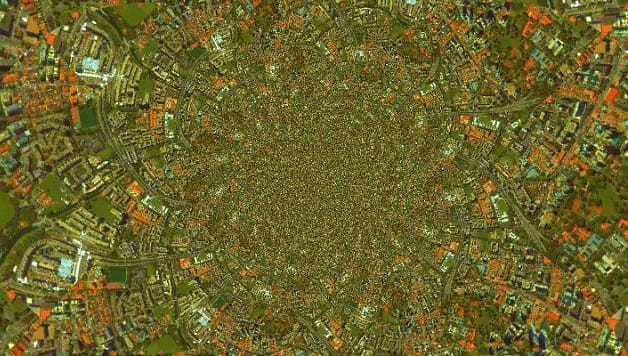Bioinformatician envisions a 'predictive OS for cities'

The world is full of patterns, even though we don’t always see them. Advances in computing can help to unlock these patterns to make life easier, better and more convenient.
That’s especially true in the world’s crowded and ever-growing cities, where new ways of compiling, analyzing and understanding terabytes worth of “big data” from sensors, electronic devices and other sources are actually helping to predict the future. The innovations being developed by a company called Snips are aimed at enabling such predictions to help people, for example, know where they’re most likely to find an open parking space on the street or adjust their commuting plans to avoid the most crowded trains.
 Founded by Rand Hindi, a bioinformatician and algorithm architect who’s also (since the age of 14) a serial entrepreneur, Snips has a vision of future cities that are more in tune with — and responsive to — the needs of the people who live in them.
Founded by Rand Hindi, a bioinformatician and algorithm architect who’s also (since the age of 14) a serial entrepreneur, Snips has a vision of future cities that are more in tune with — and responsive to — the needs of the people who live in them.
“What we’re trying to create is essentially a predictive operating system for cities,” Hindi says. “To make sure that everybody gets access to what they need when they need it. It’s giving people good options to improve the quality of life.”
For example, he points out, “It doesn’t really make sense that bus stops are fixed.” A better public transport system, he says, would “know” when more people are traveling in certain directions because of a concert or other special event, and would intelligently direct buses to the right places to accommodate the crowds.
On his interest in data:
“I’ve always been involved with data somehow … I realized there were many, many, many different things in our daily lives that could be solved with data.”
On how Snips helps its customers:
“It depends on the business we partner with. In the (case of the national) French railway (SNCF), it’s to improve the experience for the customer … Telcos and private companies have a big incentive (to increase profitability).”
“We usually try to create a win-win situation in every case.”
On the limits of data:
“The first problem is that you don’t always have access to the right data. Data will not allow you to solve everything.”
On big data and the future of cities:
“It depends on if you’re looking at short term or long term … Long term, I really believe you can build a city that is autonomous.”
“It’s never going to be fully autonomous. You don’t want some kind of (monolith) running your life. (It would be more of) a feedback loop.”
On what people should know about data privacy:
“Unfortunately, there isn’t much people can do if companies and governments don’t play along. Private data should always be opt-in.”
“People are starting to realize their data is out there. There’s a risk that (if) you’re going to give too much control (without educating people first), people are going to be paranoid … (That would be) just killing the entire data industry. Give them more control as they understand the data.”
“It’s a very, very tricky question … It’s likely we’re going to go too far … then pull back. There’s no one answer.”
On Snips’ policy on data privacy:
“We’re not selling the data. We’re using the data to create products and services that will be sold.”
“We anonymize all the data we track. (Opt-in is) a very simple one button in the settings.”
“We kind of impose it on (our clients), to be honest … We enforce privacy by design in the actual contracts we have.”
On improving existing cities vs. building new:
“Buildings are extremely rigid. Maybe in future we need buildings that are more flexible.”
“Building a new city is different. I was watching a documentary on Masdar … What they’re doing in Masdar is kind of artificial … It’s always nicer to be in a city that has a history.”
On how Snips works:
“For the first six months, we concentrated on trying out technologies. Since January, we have worked on understanding our offering. Make it scalable.”
“(In addition to Paris), we have a project in New York, in Rio, in London. We’re designed from the ground up to be an international company.”
“We’re self-funded. I’m really proud of that.”




